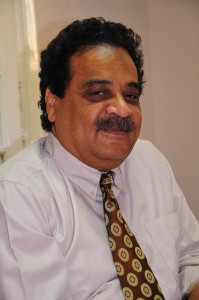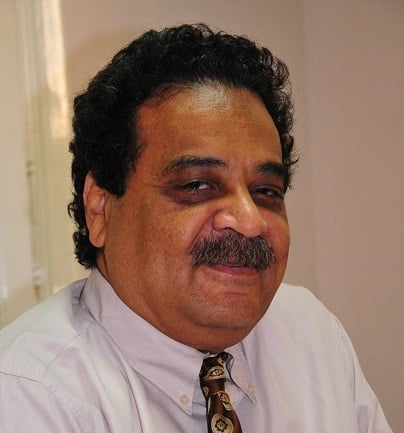
In our previous article on the inner workings of Egypt’s democratic movement, we discussed the country’s Nasserist and leftist political camps. Here, we will seek to do the same with Egypt’s social democratic and liberal movements. The largest and most important party within the former, and perhaps even the larger civil democratic movement as a whole, is the Wafd party. This is the one party about which people are not forced to ask: “What are its roots?”, “Who is its President?”, “What does it want to do exactly?” and “What does it mean for the country?”
We realize that the number of people asking these types of questions has increased since 25 January; however, at the same time, we recognize that many (perhaps most) Egyptians still remain relatively apathetic with regards to the country’s political process.
Even those who are familiar with the Wafd often know little about the actual party itself, such as the name of its president or its political goals and objectives. Many know about the Wafd in the same way that someone who is not familiar with football knows about Al-Ahly or Zamalek. Most of what the people know about the Wafd is positive, as it is the only party portrayed in history books in a purely positive light. Despite the fact that it was often at odds with the various regimes that existed in Egypt after the 1952 revolution, the Wafd was never subject to the same type of attacks by the media and repression at the hands of security forces as that experienced by Nasserists, liberals and the Muslim Brotherhood. That being said, we can say that the Wafd has succeeded in maintaining its political strength by relying on its positive reputation and historical accomplishments, which are known to all.
The Wafd Party relies largely on the support of large rural families, and some sectors of the country’s high class urban sectors. The party’s golden era was between 1919 and 1952, in which it succeeded in serving as the leading representative of the Egyptian people. The party’s current leadership is still convinced that it enjoys the same level of widespread support of different, diverse sectors of Egyptian society.
The second largest liberal party that existed before the 25 January Revolution was the Democratic Front Party. This party came under fire immediately following its inception due to the fact that it was the only real political organization which was granted legal status to operate freely during the Mubarak era. Its leader, Osama al-Ghazali Harb, was a previous member of Gamal Mubarak’s Political Secretariat. However, despite this, the party was able to attract to its ranks a large number of youth who participated in struggles against the Mubarak regime, particularly during the January 25th revolution.
The party was also successful in cultivating relationships with a number of liberal European parties. However, despite these successes, the party lost much of its appeal after al-Ghazali began to distance himself from its leadership, a situation that was exacerbated when many of its youth supporters began to break away and join other political organizations after the revolution.
The Free Egyptians Party is perhaps the most important liberal party to have been created after the revolution. Founded by Coptic business tycoon Naguib Sawiris, the party has often been considered a “Christian” party, or one that only enjoys the support of Egypt’s wealthy business community. Despite the fact that the party has exerted extreme efforts to combat this image, these allegations were unfortunately reinforced in time, partially due to smear campaigns carried out by Islamists and other rival organizations, painting the party out to be sectarian in nature. On the other hand, the party has enjoyed the support of some of those within the country’s upper class, in particular Copts, who view Sawiris as a symbol of success for the liberal economic model, which they view as capable of addressing all problems currently being faced in Egypt.
Much of the party’s leadership consists of businessmen who entered into politics after the 25 January Revolution. That being said, the party operates much like a corporation, relying on paid workers to implement party policies and positions, and employing experts and professionals to set up a strict administrative structure. The party’s leadership views this aspect of their organization as one that gives them strength and enables them to effectively pump money into politics.
Lastly, there exist three parties that collectively form what is known as the Social Democratic movement; they include the Justice Party, Constitution Party and Egyptian Social Democratic Party. Of the three, the Constitution Party is viewed as that which is best able to attract the largest number of 25 January youth to its ranks. This is aided by the popularity of its long time leader, Mohamed el-Baradei, the most prominent figure within the Social Democratic movement. The party has also been successful in attracting a large number of other popular political figures to its ranks. However, its large base of support, and the diversity of its members, is both a source of strength and weakness. Much of the party’s youth, despite their vigour, remain relatively inexperienced with regards to politics, while many of its senior figures remain unable to foster a harmonious unity amongst its members.
The Justice Party has also been successful in attracting a large number of youth supporters; however, again, due to their lack of political experience, the organization has broken into several wings and factions. Recently, one of the party’s factions decided to break away and merge with the Egyptian Social Democratic Party.
Regarding the Egyptian Social Democratic Party, of which I am the Vice Chairman, it is often alleged that we have been “wounded” politically. That being said, I will limit my comments to reviewing what I feel are the party’s main distinguishing features. First and foremost, the party attracts a wide range of supporters who possess right, left and centre positions on a number of issues. This helps the party appeal to Egyptians belonging to a wide swath of various social classes, a fact which will help it grow in the medium to long term. Secondly, the party enjoys close relations with other social democratic parties and organizations throughout the world, particularly in Europe, which gives it additional political strength and weight. The party has also been able to attract a number of political figures and symbols of many different generations and age groups, a fact which increases the party’s credibility. Furthermore, the party’s members possess effective organizational experience, which has allowed them to erect an inner structure capable of addressing any divisions that may arise from within its ranks. Unfortunately, much of the party’s leadership lacks political experience, and has failed to adopt a clear economic and social ideology, being content with identifying themselves along civil democratic lines. Lastly, the party lacks funds which would enable it to engage in political activity at the same rate as that of other parties.
Now that we have reviewed the different fault lines along which democratic political parties within Egypt are separated, is it possible to see how such parties might ally and merge with each other in the event that parliamentary elections are held?
Perhaps we will tackle this subject in the following article, if God wills it.




